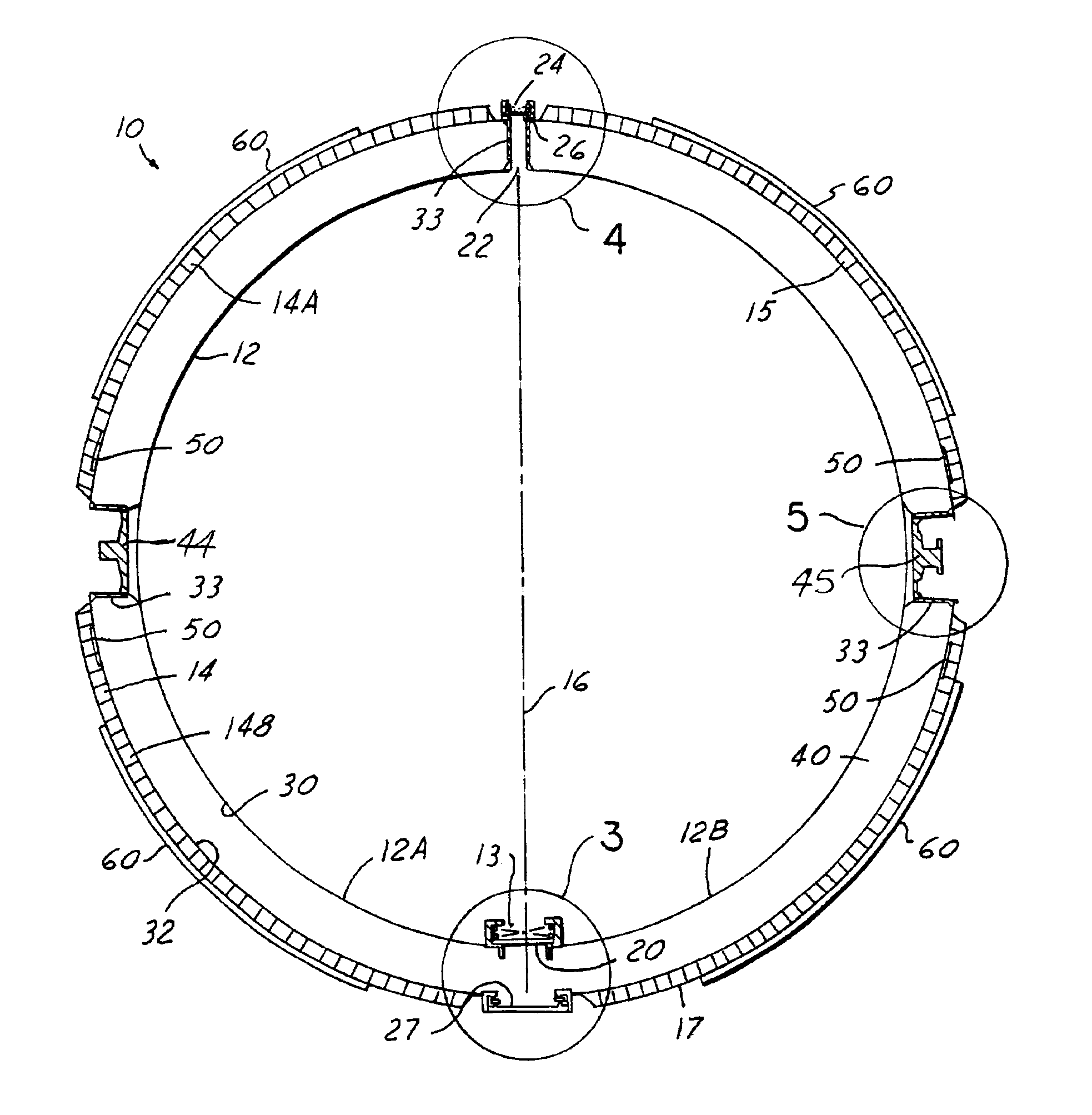Light weight hydrogen tank
a hydrogen tank and light weight technology, applied in the direction of fuel systems for specific fuels, container discharging methods, transportation and packaging, etc., can solve the problems of heavy tanks, difficult to realize endurance advantages, heavy tanks, etc., and achieve the effect of preventing icing
- Summary
- Abstract
- Description
- Claims
- Application Information
AI Technical Summary
Benefits of technology
Problems solved by technology
Method used
Image
Examples
Embodiment Construction
The present invention has particular use with stratospheric vehicles, such as hydrogen powered airplanes. A representative vehicle of this type is shown in FIG. 1 and designated by the reference numeral 5. The light weight hydrogen tank in accordance with the present invention is positioned in the airplane 5 and designated by the reference numeral 10. The airplane 5 also typically will include a fuel cell 6, turbocharger 7 and communication payload 8. The details of the hydrogen tank 10 are depicted in FIG. 2.
The tank 10 includes an inner spherical shell member 12 and an outer spherical shell member 14. The inner shell member is preferably made of a metal material in a spherical shape. In this regard, two semi-spherical halves 12A and 12B of the shell 12 are welded together along the seam or girth 16 in order to form the shell member 12. A port member or opening 20 is provided at one pole of the shell member 12 and contains a valve mechanism 13 for filling and draining of the hydrog...
PUM
 Login to View More
Login to View More Abstract
Description
Claims
Application Information
 Login to View More
Login to View More - R&D
- Intellectual Property
- Life Sciences
- Materials
- Tech Scout
- Unparalleled Data Quality
- Higher Quality Content
- 60% Fewer Hallucinations
Browse by: Latest US Patents, China's latest patents, Technical Efficacy Thesaurus, Application Domain, Technology Topic, Popular Technical Reports.
© 2025 PatSnap. All rights reserved.Legal|Privacy policy|Modern Slavery Act Transparency Statement|Sitemap|About US| Contact US: help@patsnap.com



